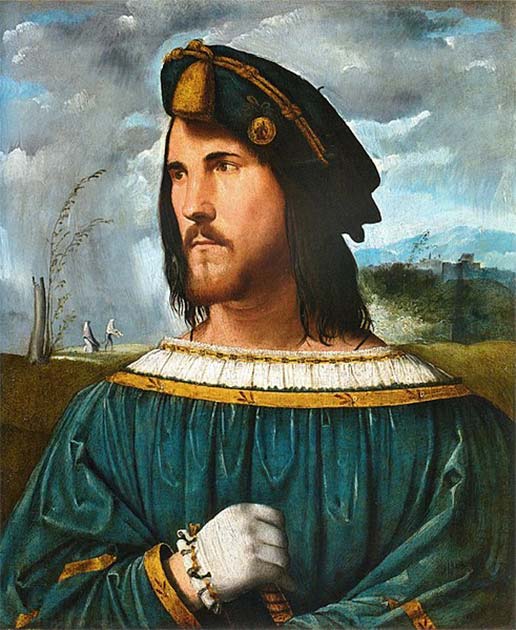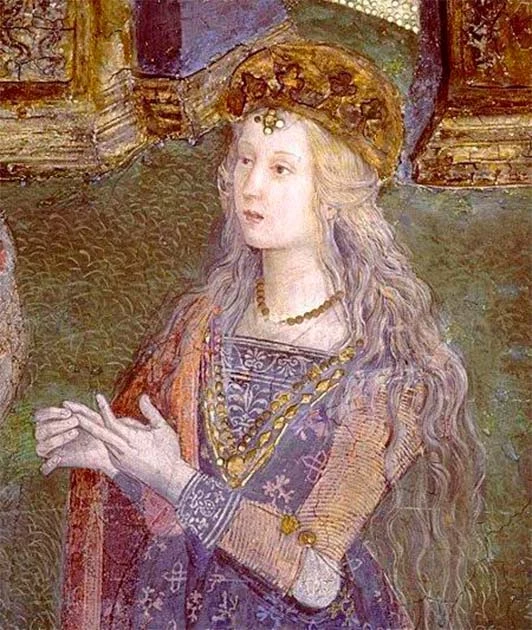When it comes to the Italian Renaissance, several famous families come to mind. Of course, there is the well-known Medici family, one of the oldest dynasties in Italy, known for politics, the papacy, banking, and patronage of the arts.
There were other equally important families during this unique time in history. There was the House of Sforza, one of the prominent ruling families of Renaissance Italy in Milan. The House of Gonzaga ruled in northern Italy, and its members included a saint, empresses, queens, twelve cardinals, and fourteen bishops.
But one name stands out, for all the wrong reasons. One of the most notorious Renaissance families is the House of Borgia. A family of popes, murderers, sex fiends, and nepotism with a reputation that is still well known today.
The House of Borgia
The House of Borgia (spelled Borja in Spanish, Valencian, and Aragonese) was an Italian-Aragonese Spanish noble family. The House of Borgia rose to prominence during the Italian Renaissance and were patrons of the arts. And while they contributed to the development of Renaissance art, this was not why they became infamous.
The House of Borgia also grew in power in both the political and ecclesiastical realms in the 15th and 16th centuries. From this family came not one but two Popes: Pope Callixtus III and Pope Alexander IV.
They did not get there smoothly, however. The House of Borgia became notorious for its bad behavior and was accused of bribery, murder, adultery, theft, incest, and simony. Simony is the act of selling church offices and roles or sacred objects.
If you look at the history of the papacy, you will find many examples of simony even after it was made illegal in the fifth century. Wanting to gain as much power, wealth, and attention as the House of Borgia was not well-liked, especially by two of the most powerful families at the time: the Sforza and Medici families.
Alfons de Borja
The first important member of the House of Borgia was Alfons de Borja. He was born in 1378 in La Torreta, Canals, which was part of the Kingdom of Valencia in modern Spain at that time.

Alfons de Borja served as a law professor at the University of Lleida, a diplomat for the Kings of Aragon, and then became a cardinal. When Alfons was in “an advanced age,” he was elected as Pope Callixtus III in 1455. He served as the pope for three years until he died in 1458.
The first pope from the House of Borgia was considered to be a relatively decent pope. He was responsible for the retrial and sentence change for Joan of Arc (she was posthumously cleared of her charges).
- The Cadaver Synod: the Posthumous Trial of Pope Formosus
- Violence Begets Violence: The Cruel Death of Beatrice Cenci
While serving as pope, he appointed two of his nephews to cardinals. Enemies of Pope Cllixtus III claimed he was corrupt, but that isn’t a surprising accusation. Popes had a history of promoting their own family members to high-ranking roles in the church.
Rodrigo Borgia
The next notable member of the House of Borgia was Rodrigo Borgia, who was born in 1431. Like his uncle Alfons, Rodrigo studied law in Bologna and was later appointed to cardinal by his uncle.
This member of the House of Borgia was quite scandalous, had several children by other women, and was in a long-term affair with Vannozza dei Cattanei, who bore four children: Giovanni, Cesare, Lucrezia, and Gioffre. Rodrigo took after his uncle in many ways, including being elected as the Pope in 1492.
The second pope from the House of Borgia was less reserved than his uncle. Choosing the name Pope Alexander VI, he was known as an excellent politician and diplomat, but he was highly criticized.

He over-spent the church’s funds, engaged in simony again, was accused of lasciviousness, and was guilty of nepotism. Pope number two from the House of Borgia appointed his son Giovanni to the role of Captain-general of the papal army and made his second son a cardinal: you can see how easy nepotism was for this family.
Pope Alexander VI used his children as a way to build alliances with the most powerful families of Italy and Spain by arranging marriages. The Sforza family was one of the most powerful families in Europe, so Pope Alexander VI married his daughter Lucrezia to Giovanni Sforza. He married his youngest son, Gioffre, to Sancha of Aragon and the Crown of Aragon and Naples.
One of the most scandalous stories about this member of the House of Borgia was that he was known to enjoy hosting orgies in the Vatican palace. The most infamous (and highly contested) orgy was known as the Banquet of Chestnuts.
The Banquet of Chestnuts was a dinner party on October 31, 1501, at the Papal Palace in Rome, and the host was Cardinal Cesare Borgia. According to an account of the event, “fifty honest prostitutes,” called courtesans, were invited to the banquet to serve as the entertainment.
After the meal, the courtesans danced for the guests, first with clothing on, then without. When the dancing finished, a candelabra was placed on the floor, chestnuts were tossed on the floor, and the nude courtesans had to crawl on the floor to pick the nuts up.
Then came the sex part of the party. It was said that Pope Alexander VI, Cesare Borgia, and Lucretzia watched and awarded those who performed well with prizes like silk, shoes, and other things. Pope Alexander VI died in 1503 after contracting what most historians believe to have been malaria.
Cesare Borgia
Cesare Borgia was Rodrigo’s (Pope Alexander) second son, and like many other members of the House of Borgia, he studied law. After law school, Cesare Borgia studied theology at the University of Pisa.
Upon his graduation, his father made him a cardinal, which was again quite the career bump. However, even for a Borgia, Cesare had a scandalous reputation.
Cesare was suspected of murdering his older brother Giovanni. There was no evidence, but everyone thought Cesare was the murderer. With Giovanni out of the way, Cesare left the church to gain power and fulfill Giovanni’s role of Captain-general. Cesare was, most agree, the most despicable member of the House of Borgia.
- Pope Joan: Did The Church Elect a Female Pope?
- The Tavora Executions: An Entire Noble Family Put to the Sword
A chronicler had reported that every day, bodies of men murdered by Cesare Borgia had to be fished out of the Tiber River. Along with murdering anyone he wanted, it was alleged that Cesare liked to practice his archery skills by standing above the prison courtyard in Rome and shooting his crossbow at the prisoners below.

Along with having two men twisted to death, this member of the House of Borgia was said to have engaged in incest with his sister Lucrezia. While most historians believe Pope Alexander VI died of malaria, it was rumored that Cesare had poisoned his father and himself.
Lucrezia Borgia
But what of this sister? Lucrezia Borgia had been promised to two princes from Spain before she was 13 years old. After her father became Pope, she was married to Giovanni Sforza at the age of 13 in 1493.
What made this political marriage unique was that when Pope Alexander VI no longer needed the power or influence of the Sforza family, he had his daughter’s marriage annulled, claiming the marriage was never consummated. When the reason for the annulment reached Giovanni Sforza, he told everyone that the reason the marriage wasn’t consummated was because Lucrezia insisted on maintaining an incestuous relationship with both her father and brother Cesare.
Like the other members of the House of Borgia, Lucrezia was no stranger to scandals. After her first marriage was annulled, she was alleged to have been in a relationship with a Spanish man, Perotto.
One day, his body and one of Lucrezia’s ladies were found dead in the Tiber in 1498. It is believed that Cesare had Perotto and the unnamed woman killed because it would interfere with negotiations that were occurring for another marriage for Lucrezia.

Lucrezia was married to Prince Alfonso of Aragon in order for the House of Borgia to form yet another alliance with a powerful family. Cesare had desired to unite with France, thus breaking the Kingdom of Naples.
Alfonso’s father was the ruler of the Kingdom of Naples, which meant Alfonso’s life was at risk. An attempt to murder Alfonso was unsuccessful; however, the second attempt was successful, and Alfonso of Aragon was found strangled to death in his room.
Cesare was likely involved in the murder plot. Lucrezia was married for the third time to Alfonso I d’Este, Duke of Ferrara. She had a series of complicated pregnancies and had multiple babies die shortly after birth. Lucrezia Borgia died in 1519, 10 days after the birth and death of her last child, Isabella Maria.
Lucrezia was said to have been a poisoner who favored Cantarella, a variation of arsenic. Lucrezia wore a hollow ring, known as a poison ring, and at banquets, she would pour the poison into someone’s drink before giving it to them.
She is not the only member of the House of Borgia who enjoyed poisoning. The family had a history of poisoning nobility, politicians, bishops, or personal enemies using things like books, gloves, flowers, and beverages to dose their victim with lethal toxins.
Top Image: Cesare Borgia picking up a few tips from Macchiavelli. Source: Federico Faruffini / Public Domain.